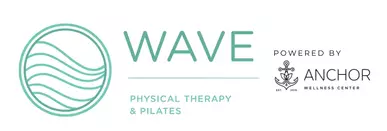The postpartum period, often referred to as the “fourth trimester,” is a time of immense physical and emotional change. While much attention is given to newborn care and maternal mental health, the musculoskeletal challenges that many women face during this time often go unnoticed or untreated. These conditions can significantly affect a new mother’s ability to care for her baby and herself. Among the most common musculoskeletal issues postpartum are areas that tend to see overuse in caring for baby. This can show up as wrist pain, back pain, hip pain, and shoulder pain.
The postpartum body undergoes significant adjustments as it recovers from the physical demands of pregnancy and childbirth. Several factors contribute to the increased risk of musculoskeletal conditions during this period, including:
Hormonal Changes
During pregnancy, hormones loosen ligaments and joints to prepare the body for childbirth. However, this increased laxity persists postpartum, leaving joints and muscles vulnerable to strain and injury.
Postural Adjustments
Pregnancy often leads to changes in posture as the body compensates for a growing belly and shifted center of gravity. Postpartum, many women adopt new postures due to breastfeeding, bottle-feeding, and carrying their baby, which can strain the neck, shoulders, and wrists.
Repetitive Motions and Overuse
New mothers frequently engage in repetitive activities like lifting, holding, or rocking their baby. These movements can lead to overuse injuries, particularly in the wrists, hands, and shoulders.
Weak Core Muscles
Our bodies adapt so well to accommodate a baby during pregnancy! We have the ability to find room in the abdomen by allowing the muscles to stretch and separate. Unfortunately, this can weaken the abdominal and pelvic floor muscles, reducing overall core stability. This can place additional stress on other parts of the body, such as the lower back and upper extremities.
Often I see women in this phase who are still adapted to a pregnant body with a wide rib cage and pelvis tilted forward which makes it difficult to properly take a deep breath or engage the core.
De Quervain’s Tenosynovitis: Also known as “mother’s wrist,” this condition involves inflammation of the tendons at the base of the thumb. It is caused by repetitive thumb and wrist movements, such as lifting the baby.
Mid back/Low Back Pain Weak abdominal muscles and increased demands on the lower back contribute to postpartum back pain. Poor lifting mechanics and prolonged standing or sitting can exacerbate the problem.This may or may not be associated with separation of the abdominal muscles (diastasis recti), but most women have some degree of this in the months following birth.
Pelvic Girdle Pain (think SI joint pain or hip pain )Hormonal changes and the strain of pregnancy can lead to instability in the pelvis, causing pain during walking or other weight-bearing activities. Oftentimes the birthing position can cause change in the position of the pelvic bones as well. If you are struggling with any hip or SI joint pain postpartum, it is a good idea to go to a PT that specializes in postpartum and Pelvic care.
Where to start? Here are some Preventative Strategies for Postpartum Musculoskeletal Health
Exercise and Strengthening: Gradual reintroduction of physical activity postpartum is crucial for rebuilding strength and stability. The most important thing to remember here is to start strengthening gradually. Addressing strength is absolutely important, unfortunately most women just don’t have the patience to work slowly into strengthening. This puts them at a higher risk of injuring themselves or dealing with prolapse and diastasis that won’t heal. It is so important here to get guidance from a professional and always follow your practitioner’s recommendation for return to exercise.
Mindful Postures: Pay attention to posture during daily tasks, and use ergonomic aids where necessary. For example, a baby carrier with proper back support can reduce strain on the shoulders and wrists.When feeding the baby, use supportive cushions to bring the baby closer to you, reducing the need to hunch forward. Focus on maintaining neutral wrist alignment during caregiving tasks to minimize unnecessary strain.
Restore breath patterns: This should maybe be at the top of the list! It is so important to know how to take a full diaphragmatic breath (it may not be as simple as you think). This will help reduce pain and help with core engagement.
Breaks and Rest: (I know this is tough) Take frequent breaks from repetitive tasks and use proper body mechanics during lifting and carrying. This also may mean accepting help from loved ones.
Seek Help: If pain persists or worsens, consult a physical therapist or healthcare provider specializing in postpartum care. Early intervention can prevent minor issues from becoming chronic conditions.
The postpartum period is a time of transition, during which new mothers face both joys and physical challenges. Musculoskeletal conditions like wrist pain, postural pain, and repetitive strain injuries are common but often overlooked. By understanding the risk factors, practicing proper ergonomics, and seeking timely care, women can minimize discomfort and support their recovery. Prioritizing musculoskeletal health not only benefits mothers but also enhances their ability to care for their newborns effectively.
About the Author

Dr. Koehl is a Doctor of Physical Therapy looking to make a difference in the health and well-being of the people in her community. She loves to educate patients to empower them in taking control of their health and reaching their goals including those with acute and chronic orthopedic conditions, pelvic floor dysfunction, and neurological conditions.


